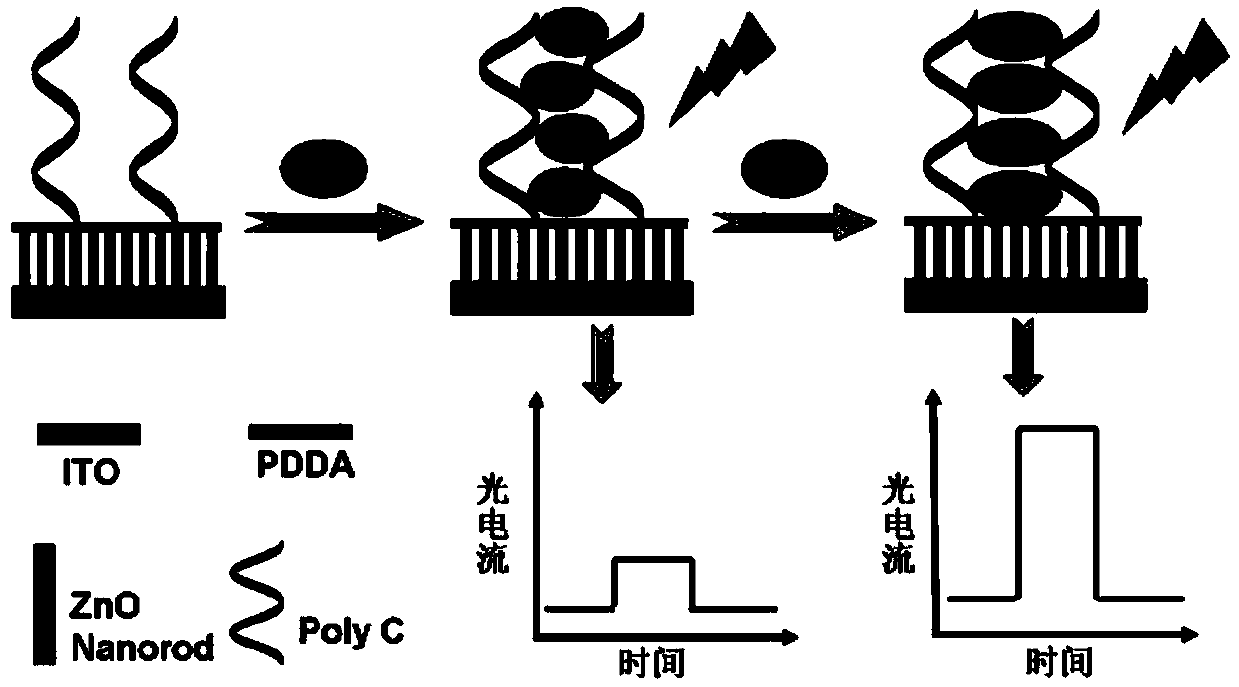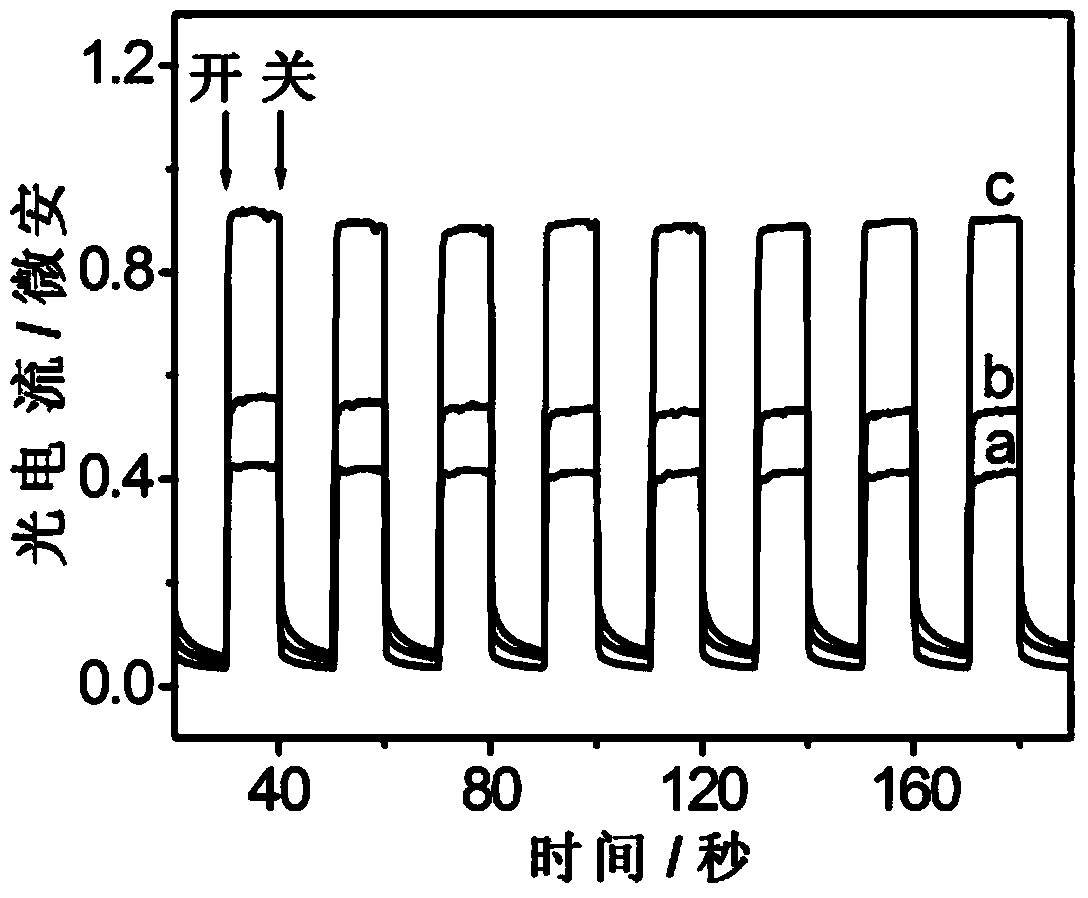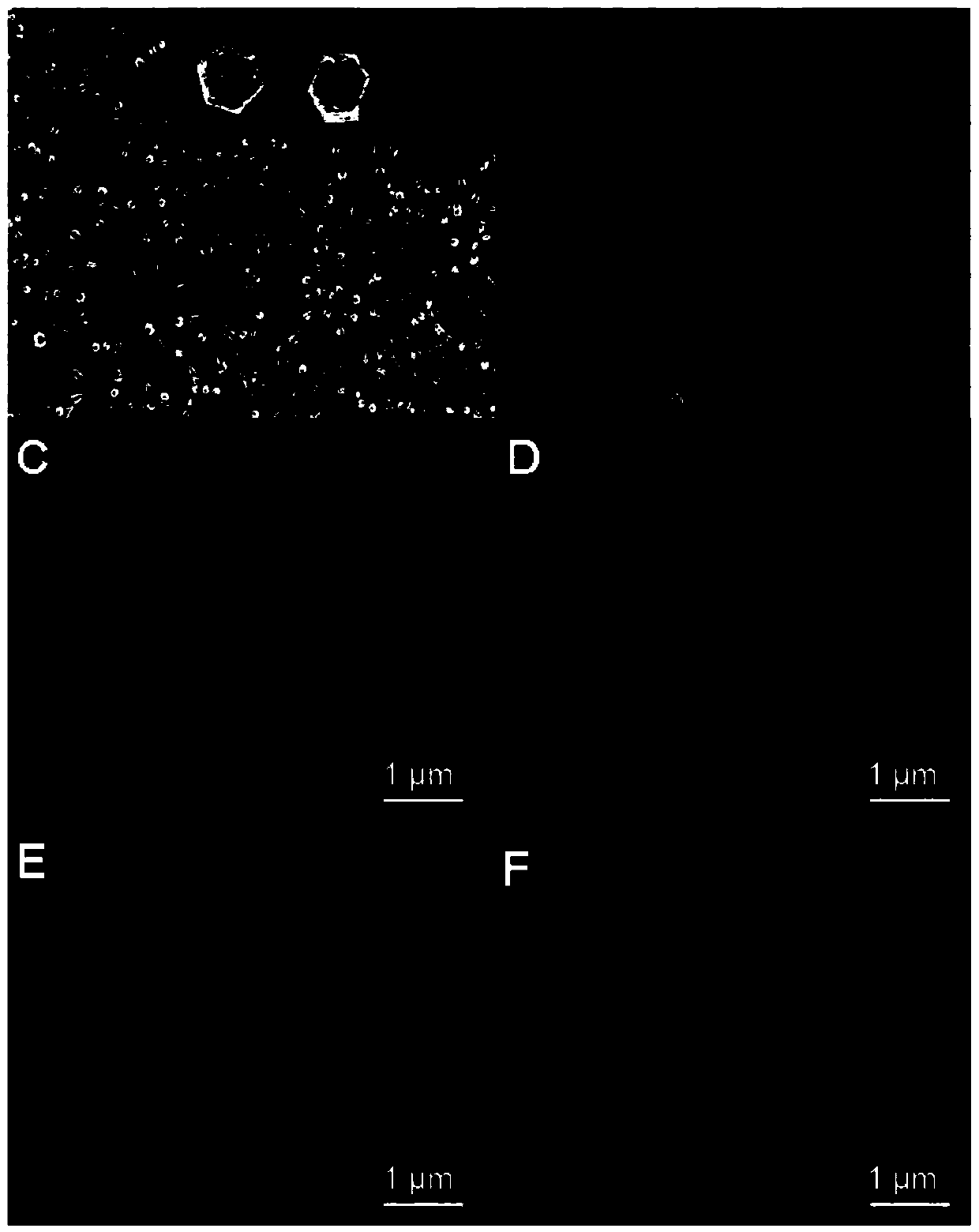Photoelectrochemical method for detecting silver ions
A technology of photoelectrochemistry and silver ions, applied in the field of analysis and detection, can solve the problems of increasing the complexity of the method, achieve the effects of simple operation and portability, promotion of effective separation, and simple production
- Summary
- Abstract
- Description
- Claims
- Application Information
AI Technical Summary
Problems solved by technology
Method used
Image
Examples
Embodiment 1
[0028] Embodiment 1: a kind of photoelectrochemical method that is used for silver ion detection, this method comprises the steps: as figure 1 as shown,
[0029]The specific preparation scheme of ZnO nanorods is as follows: First, the ITO electrodes with the specifications of width × length 1 cm × 4 cm were respectively used with 1mol L -1 NaOH and 30% H 2 o 2 Washed again with acetone and ultrapure water, respectively, and then in a conventional three-electrode system, from 0.25 mmol L at 70 °C -1 Zn(NO 3 ) 2 ·6H 2 O and 0.1 mol L -1 KNO 3 The effective geometric area of ITO is φ5 mm when electrodeposited in the mixed solution at -0.9 V relative to the standard silver-silver chloride electrode for 1 hour. Then, the ZnO nanorod array electrode was heat-treated at 110° C. for 0.5 hour to make the ZnO closely contact with the conductive substrate of the ITO electrode, so as to obtain the ZnO nanorod array electrode.
[0030] Layer-by-layer assembly for Ag + The s...
Embodiment 2
[0032] Embodiment 2: a kind of photoelectrochemical method that is used for silver ion detection, this method comprises the steps: as figure 1 as shown,
[0033] The specific preparation scheme of ZnO nanorods is as follows: First, the ITO electrodes with a size of 1 cm × 4 cm were respectively mixed with 1 mol L -1 NaOH and 30% H 2 o 2 Washing, and then washing with acetone and ultrapure water, ZnO nanorod array electrodeposition preparation process is as follows: In a traditional three-electrode system, from 0.5 mmol L -1 Zn(NO 3 ) 2 ·6H 2 O and 0.1 mol L -1 KNO 3 Electrodeposited at -1.0 V (the voltage is the voltage relative to the standard silver-silver chloride electrode) in the mixed solution for 2 hours, the effective geometric area of ITO is φ 5 mm. The above electrode was then heat-treated at 110° C. for 1 hour to bring it into close contact with the ITO electrode substrate.
[0034] Layer-by-layer assembly for Ag + The specific protocol for detectio...
Embodiment 3
[0036] Embodiment 3: a kind of photoelectrochemical method that is used for silver ion detection, this method comprises the steps: as figure 1 as shown,
[0037] The specific preparation scheme of ZnO nanorods is as follows: First, the ITO electrodes with a size of 1 cm × 4 cm were respectively mixed with 1 mol L -1 NaOH and 30% H 2 o 2 Washing, and then washing with acetone and ultrapure water, ZnO nanorod array electrodeposition preparation process is as follows: In a traditional three-electrode system, from 1 mmol L at 90 °C -1 Zn(NO 3 ) 2 ·6H 2 O and 0.1 mol L -1 KNO 3 Electrodeposited at -0.8 V (the voltage is the voltage relative to the standard silver-silver chloride electrode) in the mixed solution for 0.5 hours, the effective geometric area of ITO is φ5 mm. Then, the ZnO nanorod array electrode was heat-treated at 110° C. for 2 hours to make the ZnO closely contact with the conductive substrate of the ITO electrode, so as to obtain the ZnO nanorod array...
PUM
 Login to View More
Login to View More Abstract
Description
Claims
Application Information
 Login to View More
Login to View More - R&D
- Intellectual Property
- Life Sciences
- Materials
- Tech Scout
- Unparalleled Data Quality
- Higher Quality Content
- 60% Fewer Hallucinations
Browse by: Latest US Patents, China's latest patents, Technical Efficacy Thesaurus, Application Domain, Technology Topic, Popular Technical Reports.
© 2025 PatSnap. All rights reserved.Legal|Privacy policy|Modern Slavery Act Transparency Statement|Sitemap|About US| Contact US: help@patsnap.com



